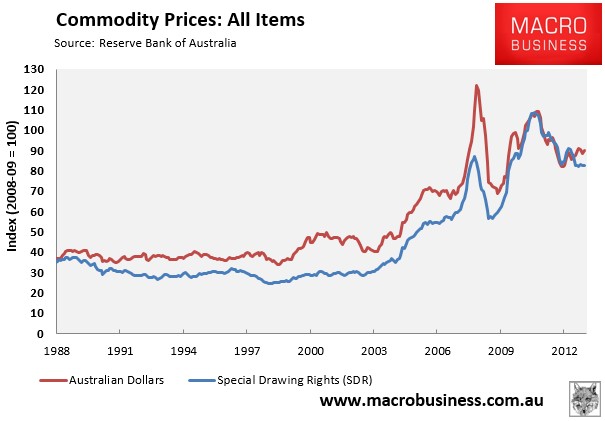
The Reserve Bank of Australia last night released its commodity price index for the month of November, which registered an increase in commodity prices in both Australian Dollar and special drawing rights (SDR) terms (effectively a measure of commodity prices based on a broad range of currencies) on the back of rises in iron ore and thermal coal:
Preliminary estimates for November indicate that the index increased by 0.1 per cent (on a monthly average basis) in SDR terms, after declining by 0.4 per cent in October (revised). The prices of iron ore and thermal coal increased in November, which were partly offset by declines in the prices of gold, coking coal and wheat. The base metals and the rural subindices also declined in the month. In Australian dollar terms, the index increased by 1.5 per cent in November.
Over the year, commodity prices have fallen by 1.9% in SDR terms on the back of declines in the prices of gold, wheat and coal, whereas the price of iron ore has risen. However, due to the depreciation in the Australian Dollar, commodity prices have actually risen by 10% over the past year in local currency terms (see next chart).

Looking forward, continued depreciation of the AUD will be required to cushion the blow to government revenues and nominal GDP, as well as promoting growth in the non-mining economy, as the terms-of-trade unwinds.
unconventionaleconomist@hotmail.com

